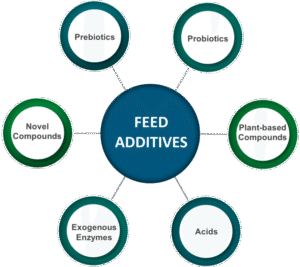The study of variations within a single population falls under the field of microtaxonomy, which focuses on the detailed examination of individuals within a species. Microtaxonomy contrasts with macrotaxonomy, which involves broader classifications and comparisons at higher taxonomic levels, often dealing with entire groups of organisms.
Microtaxonomy: Study of Variations within a Single Population
1. Population Genetics:
• Microtaxonomy often involves the study of genetic variation within populations. Population genetics examines the distribution of genetic traits, allelic frequencies, and the mechanisms driving genetic diversity within a population.
2. Morphological Variation
• Microtaxonomy includes detailed investigations into the morphological variations among individuals within a population. This can involve the analysis of external features, internal structures, and other morphological characteristics.
3. Ecological Variability:
• The study of how individuals within a population interact with their environment and how environmental factors contribute to variability is an essential aspect of microtaxonomy.
4. Behavioral Differences:
• Variations in behavior, mating rituals, communication, and other behavioral traits are considered in microtaxonomy to understand the complexity of intraspecific diversity.
5. Reproductive Strategies:
• Microtaxonomy may explore variations in reproductive strategies, such as differences in mating systems, breeding seasons, and parental care within a population.
Macrotaxonomy: Broader Taxonomic Classifications
1. Species Comparisons:
• Macrotaxonomy involves the comparison of species, genera, families, and higher taxonomic categories. It deals with the classification and identification of organisms based on broader characteristics.
2. Evolutionary Relationships:
• Macrotaxonomy often considers evolutionary relationships and phylogenetic analyses to understand the evolutionary history of groups of organisms.
3. Biogeography:
• The distribution of species and higher taxonomic groups across geographical regions is a key aspect of macrotaxonomy, providing insights into historical and ecological patterns.
4. Adaptations to Environments:
• Macrotaxonomy considers how groups of organisms have adapted to different environments and ecological niches.
Types of Taxonomic Characters:
1. Morphological Characters:
• Morphological characters involve the study of physical features such as size, shape, color, and other external and internal structures.
2. Anatomical Characters:
• Anatomical characters focus on the internal structures, including organs, tissues, and systems.
3. Genetic Characters:
• Genetic characters involve the study of an organism’s genetic material, including DNA and RNA. Molecular techniques are commonly used to analyze genetic variation.
4. Behavioral Characters:
• Behavioral characters include traits related to an organism’s behavior, such as mating rituals, feeding habits, and communication.
5. Ecological Characters:
• Ecological characters involve the study of how organisms interact with their environment, including their habitat preferences, diet, and niche specialization.
6. Physiological Characters:
• Physiological characters pertain to the functioning of an organism’s physiological systems, including metabolic processes and adaptations to environmental conditions.
Thank you for reading. Don't forget to subscribe & share!









